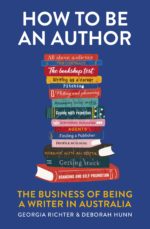Tips for pitching your next manuscript to a publisher with Fremantle Press

As an author with a new manuscript, you may occasionally have the opportunity to pitch your work to a prospective publisher. The chance to do so should be regarded as a bonus opportunity, particularly if a publisher does not ordinarily receive unsolicited material. In this article, Fremantle Press publisher Georgia Richter puts the pitch in context and shares her top tips for doing it right.
How important is the pitch?
Your ability to pitch your work well may pique a publisher’s interest, though it is unlikely, realistically, to give you an edge over another author who may just send a strong cover letter and sample material to a publisher: in either case, the proof will always be in the writing itself.
No matter how good you make your work sound, and how engaging, the writing itself must be strong. Just as a cover letter tells the publisher something about you as a marketable commodity, the pitch session does the same. Are you confident and outgoing? Do you have an engaging mode of delivery? Are you responsive and adaptable when it comes to the audience you are pitching to? Would you be a good ambassador for the publishing house itself? The publisher is keen to assess these things, because it means you will be an asset to the publisher, should your work also fit the publisher’s list.
What should you prepare?
When you are preparing your material for a pitch, take a look at the submission guidelines of your prospective publisher. The kinds of things they ask for to accompany a submission are the kinds of things they might also look for in a pitch.
Tip one: understand your book’s genre
This will directly affect how you shape your pitch because it requires from you an evaluation of your market and audience. So think about where you see your book sitting on the shelves in your local bookstore. Take a look at the other books on that shelf. How many are books that you recognise already and appear to be experiencing success? Conversely how many aren’t? Who reads these books? Do a bit of research on the internet or subscribe to industry newsletters like Books+Publishing to understand what genres are selling and how these books are presented within that genre.
Tip two: understand your own work
Try writing a back blurb. This is a good indication of where your book is at. If you can’t condense your work into a back blurb style summary with an enticing hook, then perhaps your work is not yet ready to be pitched and still requires some refining.
Tip three: present pertinent biographical details
Write a 100-word biography and then practise speaking it aloud. What is it about you that qualifies you to tell this story? What evidence do you have of your track record as a writer? What information is unnecessary to your pitch?
What are the key dos and don’ts for your pitch presentation?
Don’t:
- Tell the publisher how much other family members have loved your work –leave it to them to decide for themselves upon the quality of the work
- Tell the whole story, warts and all, as you only have the publisher’s attention for a short time: a blow-by-blow account is not the best use of your time.
- Apologise for anything, at all – confidence is key!
Do:
- Work on presenting a tight, engaging, tantalising presentation of your work.
- Practise your pitch beforehand to an audience. Seek their help in identifying highlights and low points to refine your delivery.
- Remember your pitch is a performance: preparation and practice create confidence in delivery.
Who should I try to be?
Perhaps most importantly, when going to a pitch meeting, do not feel as though you have to be someone you are not. It is your best possible self the publisher is hoping to see when you make your pitch – those things that make you interesting and quirky are positives in the publisher’s eye.





